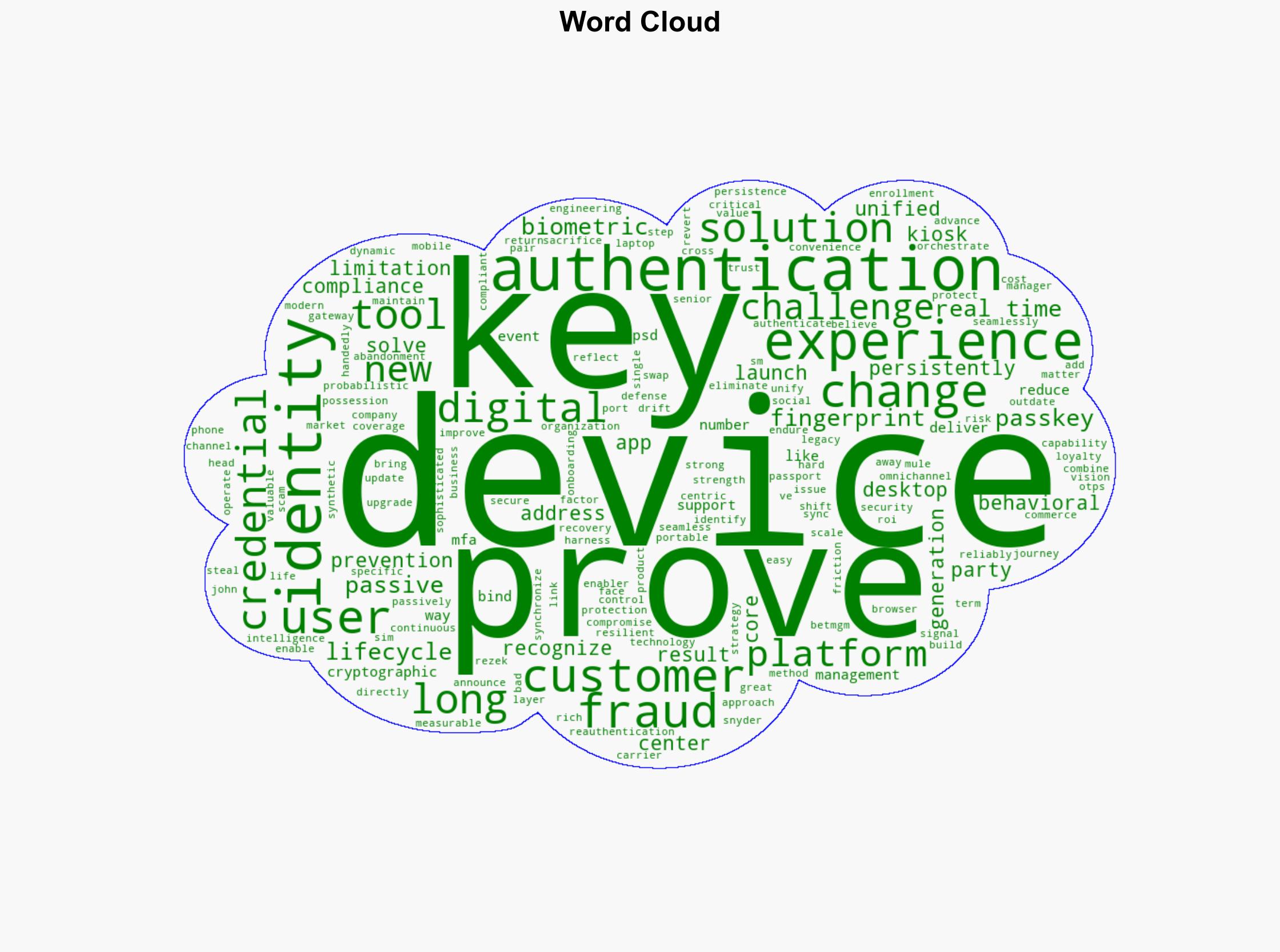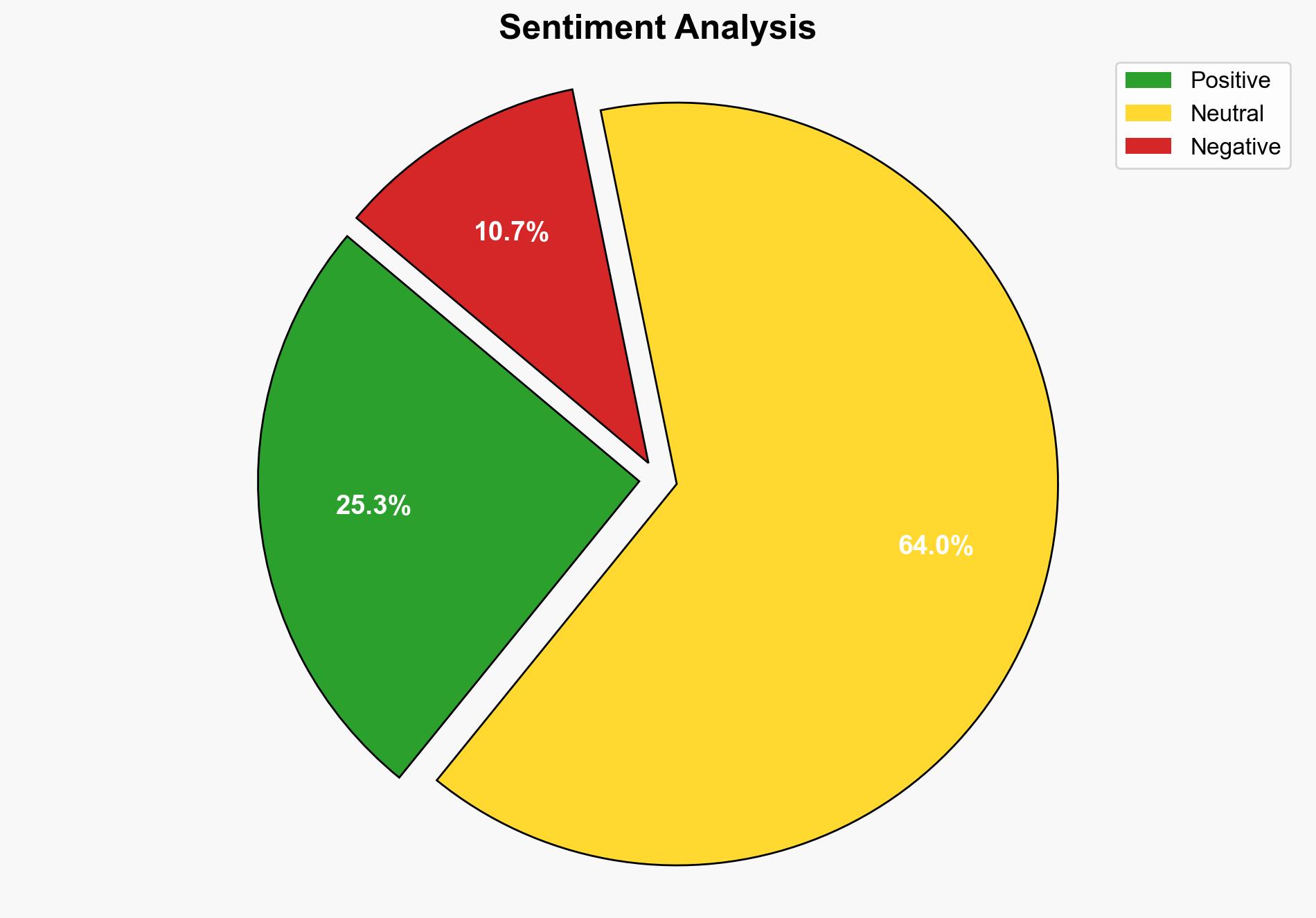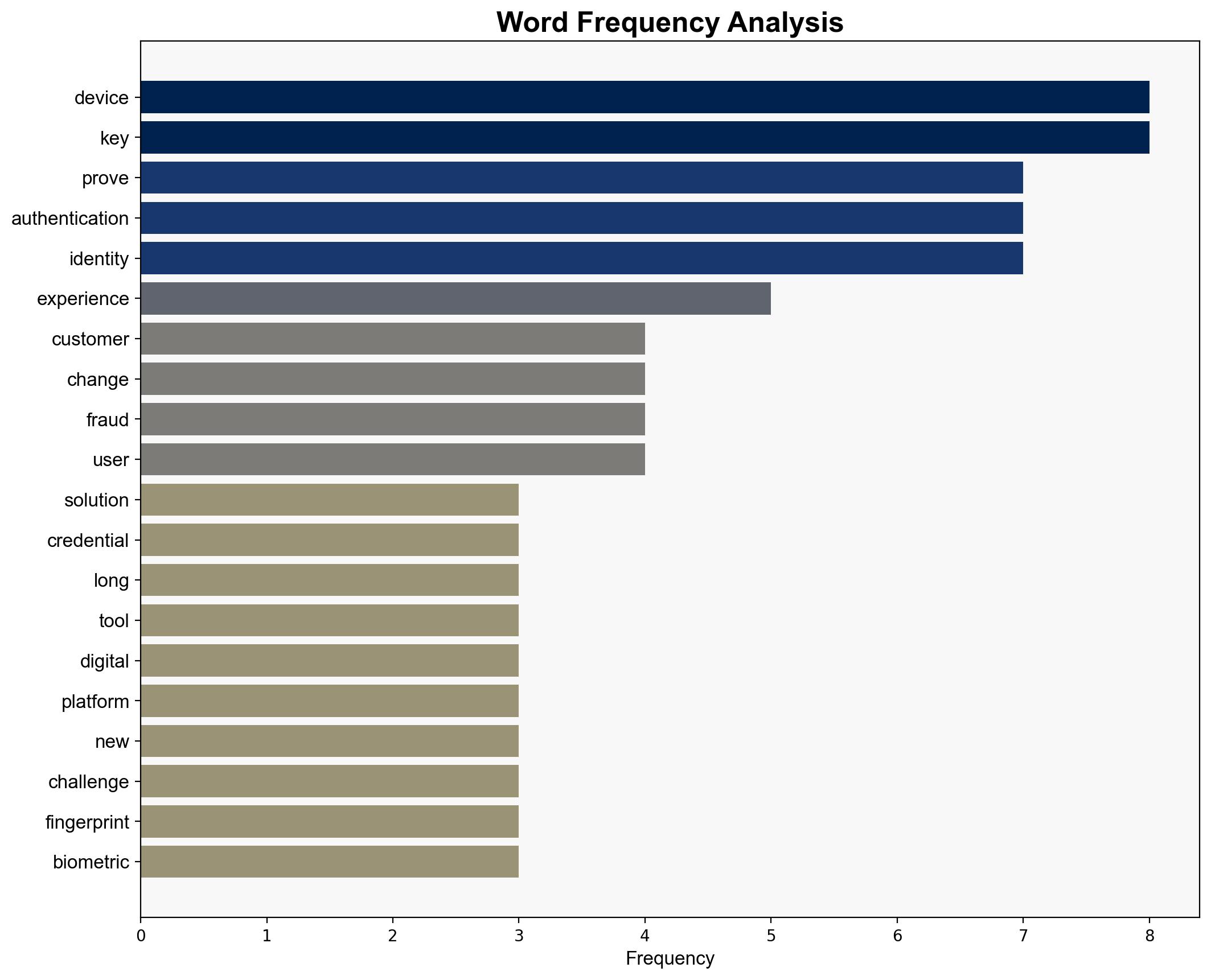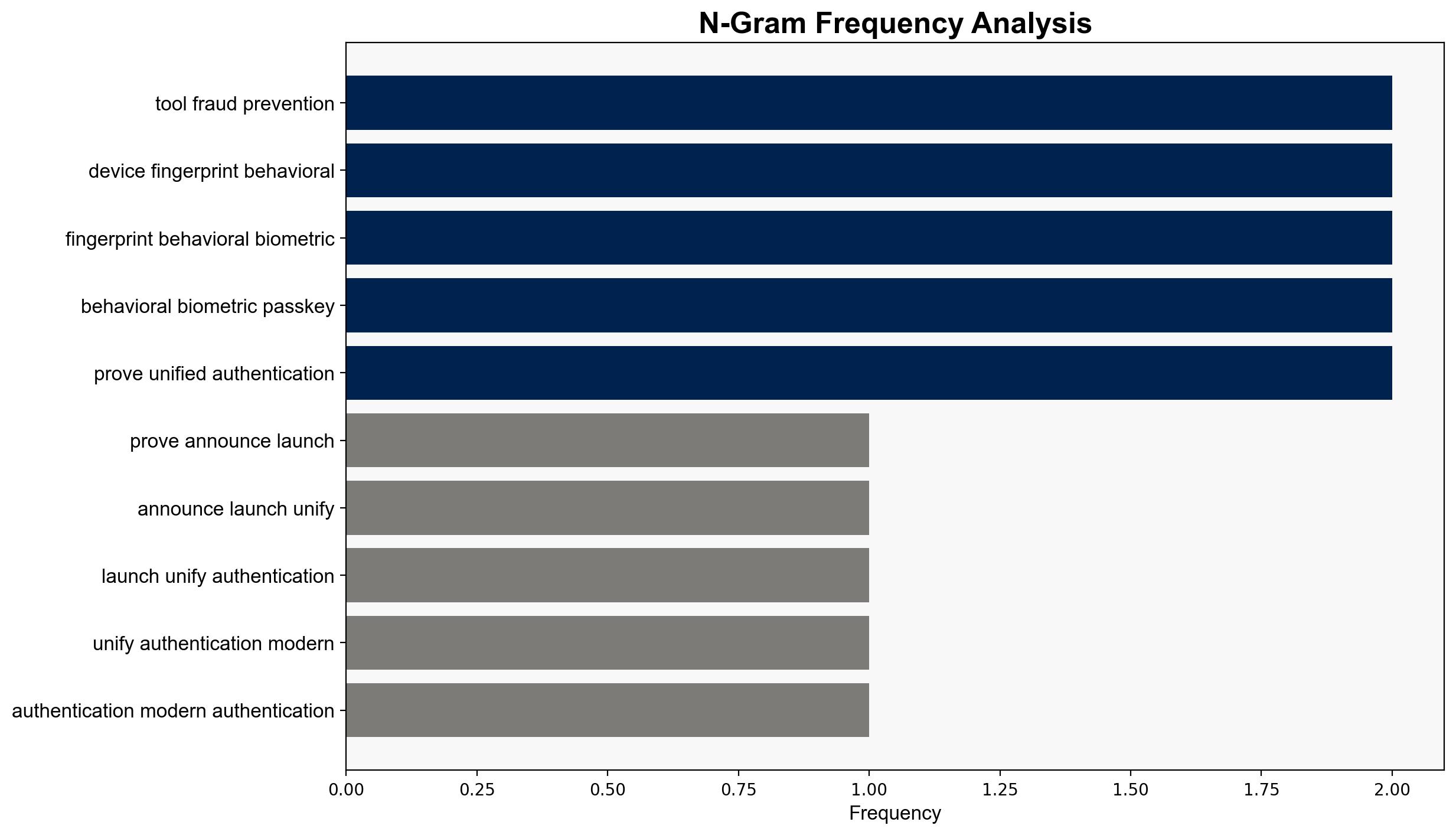Prove Launches Unified Authentication Solution with Passive Persistent Customer Recognition – Vmblog.com
Published on: 2025-08-12
Intelligence Report: Prove Launches Unified Authentication Solution with Passive Persistent Customer Recognition – Vmblog.com
1. BLUF (Bottom Line Up Front)
The launch of Prove’s unified authentication solution represents a significant advancement in digital identity verification, potentially reshaping the landscape of fraud prevention and user experience in digital commerce. The most supported hypothesis suggests that this solution will effectively enhance security while reducing friction for users. Confidence in this hypothesis is moderate due to the absence of empirical performance data. Recommended action includes monitoring the adoption rate and performance metrics of this solution across different sectors to validate its effectiveness.
2. Competing Hypotheses
– **Hypothesis 1**: Prove’s solution will significantly enhance security and user experience, leading to widespread adoption across industries.
– **Hypothesis 2**: Despite its potential, Prove’s solution may face challenges in adoption due to technical integration issues, user resistance, or unforeseen security vulnerabilities.
Using the Analysis of Competing Hypotheses (ACH) 2.0, Hypothesis 1 is better supported by the strategic alignment of the solution with current market needs for seamless and secure authentication. However, Hypothesis 2 cannot be dismissed due to potential integration complexities and the evolving nature of cybersecurity threats.
3. Key Assumptions and Red Flags
– **Assumptions**: It is assumed that Prove’s technology is compatible with existing systems and that users will readily adapt to the new authentication method.
– **Red Flags**: Lack of detailed performance data and case studies raises questions about the real-world efficacy of the solution. The reliance on new technologies such as device fingerprinting and behavioral biometrics could introduce unforeseen vulnerabilities.
4. Implications and Strategic Risks
The successful implementation of Prove’s solution could set a new standard in digital authentication, reducing fraud and enhancing user trust. However, failure to address integration challenges or emerging security threats could result in reputational damage and financial losses. The economic impact could be significant if the solution fails to deliver promised ROI, affecting stakeholder confidence.
5. Recommendations and Outlook
- Monitor early adopters for feedback on integration and user experience.
- Conduct regular security audits to identify and mitigate potential vulnerabilities.
- Scenario Projections:
- Best Case: Widespread adoption leads to a new industry standard, enhancing security and user satisfaction.
- Worst Case: Security flaws or integration issues lead to limited adoption and financial losses.
- Most Likely: Gradual adoption with iterative improvements based on user feedback and security assessments.
6. Key Individuals and Entities
– John Snyder
– Rich Rezek
7. Thematic Tags
cybersecurity, digital identity, fraud prevention, user experience




